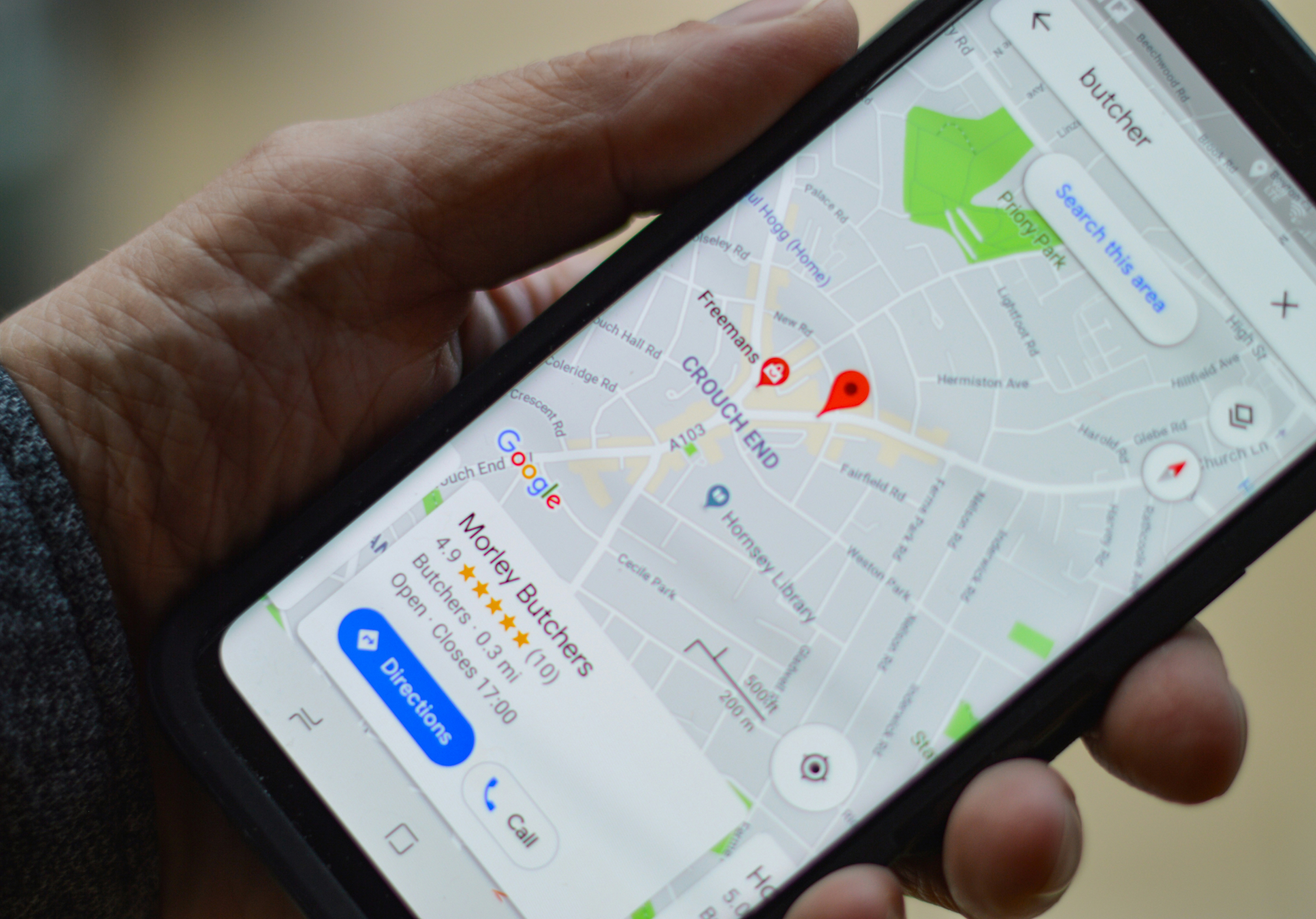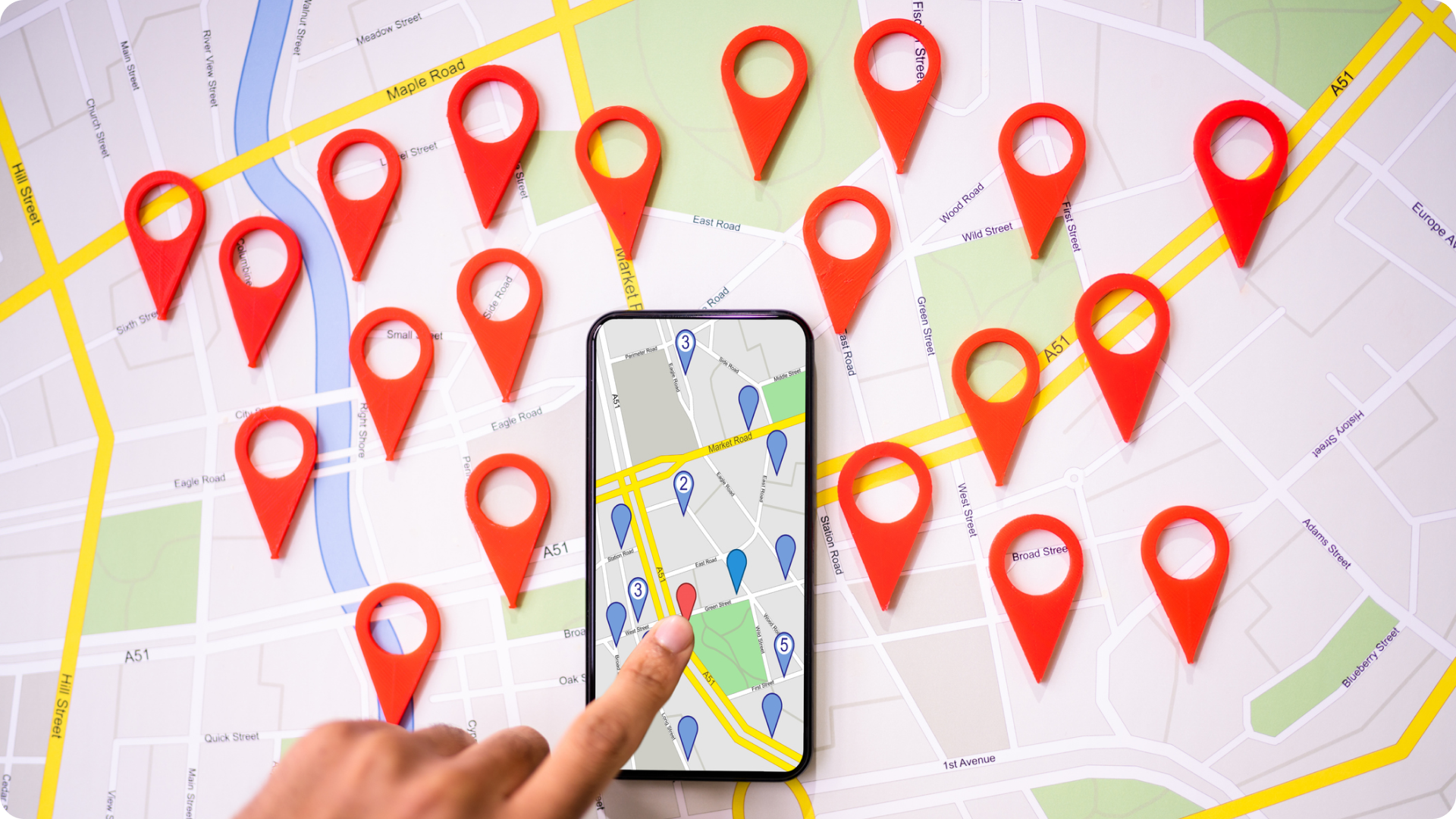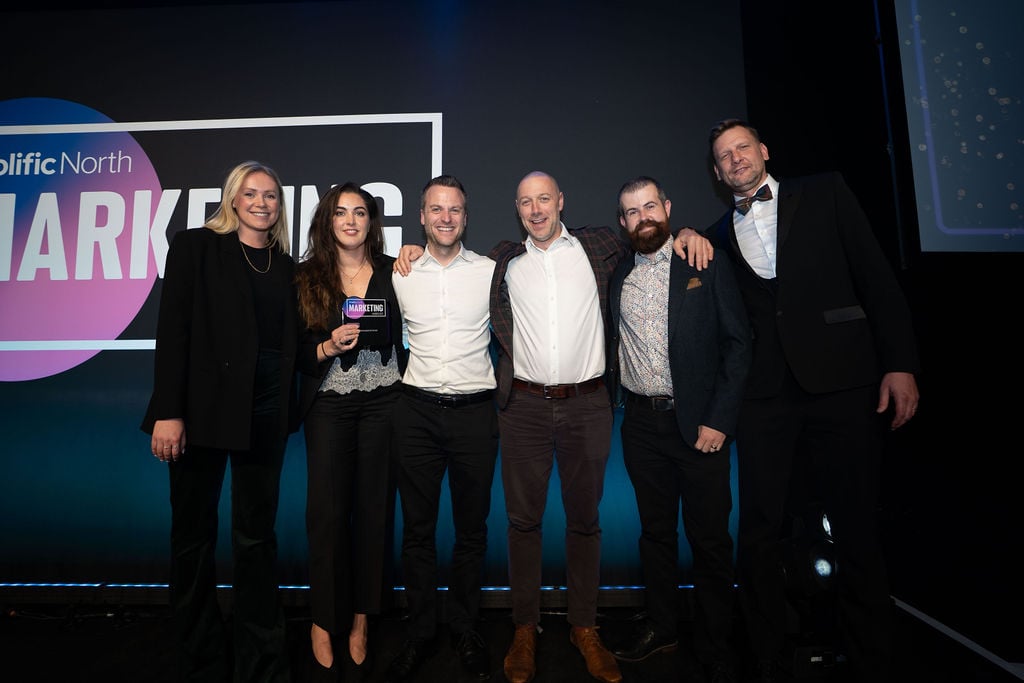For businesses that operate within specific geographical areas, mastering local SEO is the key to attracting nearby customers.
Whether you’re running a cosy coffee shop, an estate agent branch, or a luxury furniture shop, local search ensures your business appears in front of the right audience at the right time.
But how does local SEO work, and how can you leverage this for your business? Here’s the fundamentals, strategies, and tools to dominate local search results and drive traffic to your doorstep.
What is local SEO?
Local SEO is all about optimising your online presence via relevant local searches.
These searches typically occur on Google and other search engines and are often accompanied by phrases like "near me" or location-specific terms like "best pizza in Leeds".
So, if someone searches for "plumber near me," local SEO ensures that your plumbing business appears in the search results, maps, and directories for users in your area. Remember, this type of SEO is very localised, and the geographical location of searches plays a big part in this.

Why is local SEO important?
Local SEO is crucial for businesses that rely on foot traffic or serve customers within a specific geographic area.
Here are some of the benefits of pursuing this type of SEO optimisation:
- Increased visibility
Local SEO puts your business front and centre when potential customers search for services in your area. - Higher conversion rates
Local searches often lead to immediate action. According to Google, 76% of people who search for something nearby visit a business within a day. - Mobile optimisation
With the increasing rise of mobile searches, local SEO ensures your business is easily discoverable by users on their smartphones. - Competitive edge
Despite its many benefits, many businesses still neglect local SEO. Why not outperform competitors who aren’t leveraging this strategy?

How does local SEO work?
Local SEO revolves around a few key components that help search engines determine the relevance and proximity of your business to the user.
Here’s how local SEO works:
- Google Business Profile (GBP)
Google Business Profiles - you may previously have known this as Google My Business - is the cornerstone of local SEO. It’s a free tool that allows you to create a profile for your business, including essential details like your name, address, phone number (NAP), hours of operation, website link, and reviews.
When someone searches for businesses near them, Google uses your GBP to decide whether to display your business in the Local Pack, the map section at the top of search results. - NAP consistency
Your Name, Address, and Phone Number (NAP) must be consistent across all online platforms, including your website, GBP, social media accounts, and directories like Yelp or Yellow Pages. Inconsistent information can confuse search engines and hurt your rankings. - Local keywords
Local keywords are phrases that include geographic terms relevant to your area. For example:
- "Best Italian restaurant in Yorkshire"
- "Estate agents near Manchester”
Including these keywords in your website content, meta descriptions, and headers helps search engines associate your business with these types of local searches. - Reviews
Online reviews play a big role in local SEO. Positive reviews build trust with potential customers, as well as indicating a strong online reputation and customer engagement signals to search engines. User-generated reviews contain valuable keywords, improving search relevance. The best way to get a consistent stream of positive reviews is to ask satisfied customers to leave them on online platforms, especially your GBP, and actively respond to the feedback. - Backlinks from local sources
For local SEO, prioritise acquiring relevant backlinks (links from other sites to yours) from relevant local websites such as chambers of commerce, community blogs, or local news outlets.
Step-by-step guide on implementing local SEO
Let’s dive into actionable steps to optimise your business for local SEO.
1. Conduct a local SEO audit
Regularly auditing your local SEO performance is key to identifying areas for improvement and is an ideal place to start your strategy. Here’s what to review:
- GBP audit: Where are you appearing in the local pack for key search terms? Which keywords are performing well, and which aren’t?
- Website audit: Analyse your website for mobile-friendliness, page speed, local keyword usage, and proper NAP implementation.
- Citation audit: Verify NAP consistency across all online directories and correct any discrepancies.
- Review audit: Set up a monitoring system for your reviews. Take note of how many you currently have and which need to be responded to.
- Competitor analysis: Research what your local competitors are doing well and identify gaps in your strategy.
2. Optimise/set up your GBP
As the foundation of local SEO success, you need to optimise your GBP profile:
- Claim your profile at https://business.google.com/uk/business-profile/
- Fill out every section completely, add photos, products, or services
- Use relevant keywords in your business description
- Keep your hours of operation updated
- Respond promptly to customer reviews (both positive and negative)
3. Optimise your website for local search
Your website and specifically your on-page SEO should reflect your location and services clearly:
- Include location-specific keywords throughout your site
- Add a dedicated "Contact Us" page with your NAP details
- Embed a Google Map showing your business location accurately
- Create localised content such as blog posts about events or tips relevant to your community
4. Build local citations
Local citations are mentions of your business’s NAP details on other websites or directories. To build citations:
- Submit your business information to online directories like Yelp, Bing Places, Foursquare, and TripAdvisor
- Ensure consistency across all platforms

5. Leverage online reviews
Reviews are vital for building trust and improving rankings, to boost them:
- Ask happy customers for reviews after completing a service or sale
- Make it easy for customers to leave reviews by providing direct links to your GBP
- Address negative reviews professionally and offer solutions
6. Use social media for local engagement
Social media platforms like Facebook and Instagram can amplify your local presence. Post regularly about promotions, events, or updates related to your business. Remember to engage with followers by responding to comments and messages promptly.
7. Focus on mobile optimisation
Since most local searches happen on mobile devices, ensure your website is mobile-friendly:
- Use responsive design so your site looks great on all screen sizes
- Optimise page loading speed
- Simplify navigation for mobile users
8. Create location-specific content
Content marketing is a powerful tool for all types of SEO, and can be leveraged specifically for local SEO when the writing is catered to your local audience:
- Highlight community events or partnerships when relevant
- Share tips related to your industry that resonate with locals
- Publish case studies featuring customers from nearby
9. Reporting and monitoring
To ensure you’re tracking your local SEO progress and how effective your efforts have been, you’ll want to monitor:
- Keyword rankings: Track organic search positions for local keywords
- Map Pack rankings: Monitor Google Local Pack visibility
- GBP insights: Use built-in analytics to understand customer discovery and profile interactions (website visits, calls, directions)
- Website traffic: Analyse search traffic via Google Analytics, noting changes after SEO updates
- Review volume and sentiment: Track review numbers and sentiment for a healthy online reputation
- Citation consistency: Audit NAP info regularly, correcting any discrepancies
10. Stay updated on local SEO
SEO is a fast-paced industry, so keeping up with Google algorithm updates, industry blogs (Search Engine Land, Moz), and monitoring official Google channels is the best way to ensure your local SEO strategy is up to date.
Tools to help your local SEO strategy
Local SEO can be time-consuming, but there are tools available to streamline the process:
- GBP Insights: Track how customers find and interact with your GMB profile
- BrightLocal: Analyse local rankings and manage citations easily
- Ahrefs: Research local keywords and monitor backlinks
- Moz Local: Ensure NAP consistency across directories
- SEMrush: Track competitors’ strategies and uncover new opportunities
Common local SEO mistakes to avoid
While optimising for local search can be rewarding, certain mistakes can hold you back and affect rankings, including:
- Ignoring customer reviews can damage your reputation
- Overloading content with keywords looks spammy and hurts rankings
- Inconsistent NAP information across platforms confuses search engines
- Skipping mobile optimisation and a slow or unresponsive website drives users away
The future of local SEO
As technology and search engines evolve, so does local SEO. AI isn’t just rising, it is already here, making search results more personalised and relevant each day.
AI not only analyses user data for tailored local recommendations, requiring businesses to provide precise information, but it also anticipates user needs. This means that maintaining an updated and uniform online presence across multiple platforms has never been more important for local SEO.
Remember, local search optimisation isn’t a one-and-done task; it requires ongoing effort and adaptation as search engines evolve.
Do you want to improve local search visibility for each of your brands?
We offer full local SEO services and would love to help boost your business’s local online presence. Get in touch to improve your search visibility.

Ready. Steady. Grow!
We've helped some of the world's biggest brands transform and grow their businesses. And yours could be next.
So if you've got a business challenge to solve or a brief to answer, we'd love to hear from you. Simply complete this form and one of our experts will be in touch!




